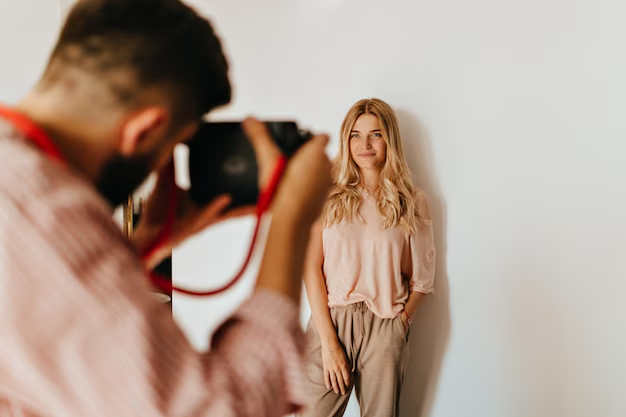People photography, especially portraits, is one of the most captivating forms of art. It’s not just about capturing a person’s likeness but also about revealing their essence, emotions, and story through the lens. The power of portrait photography lies in its ability to show the world through someone else’s eyes while offering a glimpse into their soul. Whether you’re a beginner or an experienced photographer, understanding how to capture powerful portraits requires more than just technical knowledge—it involves unlocking the subtle secrets of perspective, lighting, and composition.
The Art of Perspective in Portrait Photography
Perspective in portrait photography refers to the positioning of the subject and the camera to create compelling visuals. It can dramatically change how a person is perceived, offering various moods and emotional depth. The angle from which you photograph a subject influences their appearance and the message the image conveys.
- Eye Level: Capturing a subject at eye level creates a neutral and respectful perspective, making the viewer feel connected with the subject.
- High Angle: Shooting from above can make the subject appear smaller, conveying vulnerability or powerlessness.
- Low Angle: Shooting from below can make the subject seem larger, conveying strength, dominance, or confidence.
The Power of Lighting in People Photography
Lighting is arguably the most crucial aspect of portrait photography. Natural light, studio lighting, or artificial sources can all influence the mood of a photograph. Here are some key lighting setups to consider:
- Rembrandt Lighting: A classic portrait lighting technique that creates a triangle of light on the subject’s cheek. It gives depth and drama to the portrait.
- Loop Lighting: Slightly off to the side, loop lighting creates a small shadow under the subject’s nose, adding dimension and interest to the face.
- Soft Light: Achieved using diffusers or softboxes, it creates gentle, flattering lighting that reduces harsh shadows, perfect for a natural, intimate look.
Composition: Framing and Storytelling
The composition of a portrait can tell a story and guide the viewer’s eye. Elements like framing, the background, and negative space help in communicating the emotional tone and narrative of the subject. Avoid cluttered backgrounds that distract from the subject. Instead, use the environment to complement and enhance the person’s story. For instance, a portrait of a musician may include instruments in the background, giving context to their craft.
Capturing Authenticity in Portraits
The most powerful portraits often capture a moment of vulnerability or authenticity. While posed portraits can be beautiful, candid shots tend to convey a deeper connection. Whether it’s a subtle smile, an intense gaze, or a quiet moment of reflection, these real emotions resonate with viewers.
FAQs:
- What camera settings are ideal for portrait photography?
- Use a wide aperture (f/1.8 – f/5.6) for a blurred background, and adjust ISO and shutter speed based on lighting conditions.
- How do I make my portraits look more professional?
- Focus on good lighting, composition, and capturing genuine emotions. Also, experiment with angles and background choices.
- What is the best lens for portrait photography?
- A 50mm or 85mm prime lens is ideal for sharp focus and beautiful bokeh in portraits.
- How do I get the perfect lighting for indoor portraits?
- Use a softbox or window light for natural, diffused light that’s flattering for portraits.
- Should I use a flash in portrait photography?
- Flash can be useful in low light situations, but diffusing it or using it off-camera can prevent harsh shadows.
- How do I get the subject to relax in front of the camera?
- Engage with them, create a comfortable environment, and use humor or conversation to help them relax.
- What is the role of the background in portrait photography?
- The background should complement the subject, not distract from them. A blurred background often works well.
Conclusion:
Portrait photography is an art form that requires technical knowledge, but most importantly, a connection with the subject. It’s about capturing the essence of a person, telling their story through perspective, lighting, and composition. By understanding the nuances of perspective, experimenting with light, and focusing on the authenticity of your subjects, you can create portraits that speak volumes.

